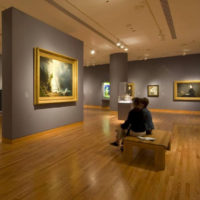“Located just a few meters from the seashore [in Ashkelon], the structure, a public building” — known then as a basilica (not to be confused with the later, Roman Catholic use of the term) — “was divided into three sections: a main hall and two side parts. According to the archaeologists, the main hall was surrounded by massive marble columns as high as 13 m. and ornate with elaborated capitals, featuring plant motifs and in some instances an eagle, a Roman symbol.” – The Jerusalem Post








